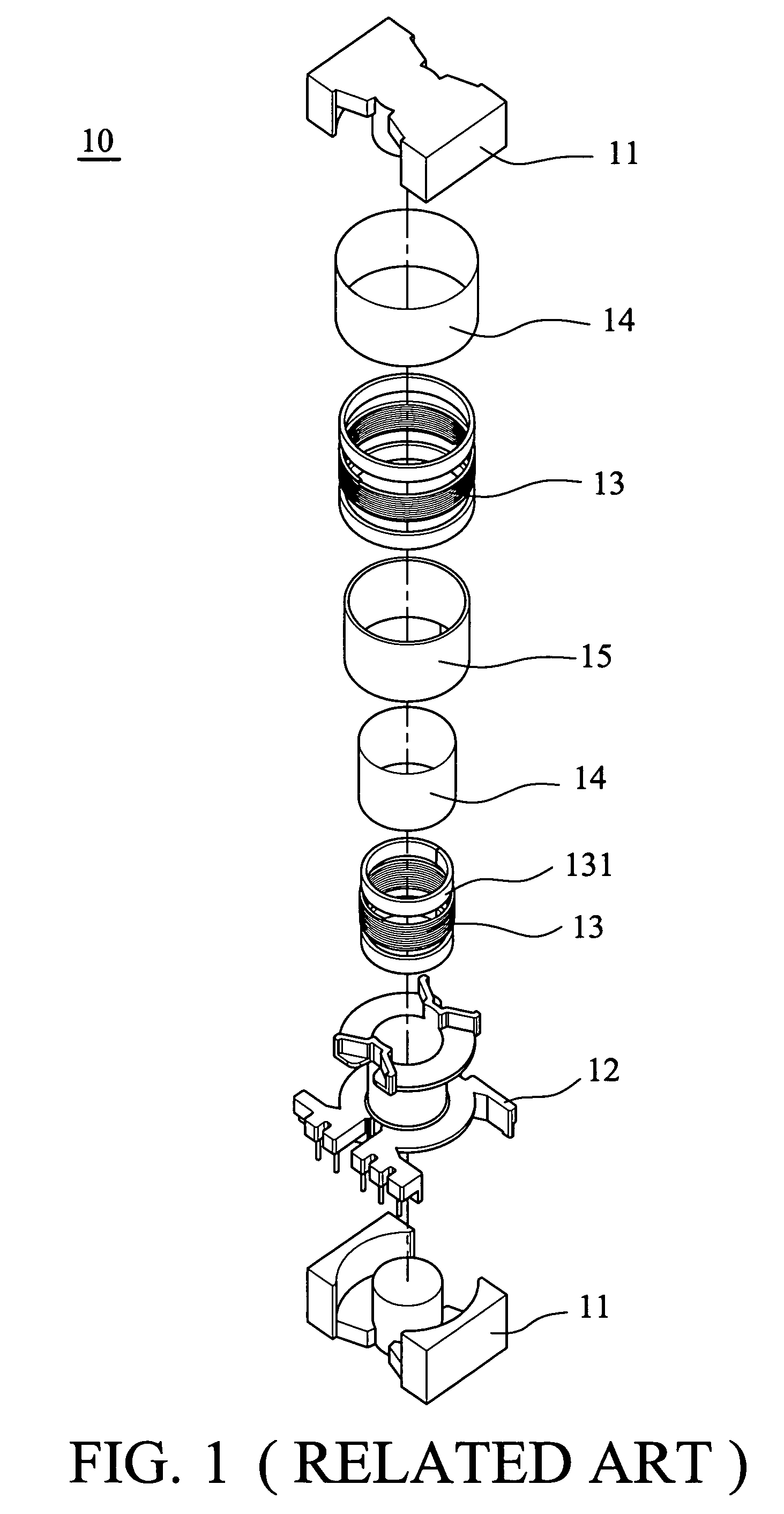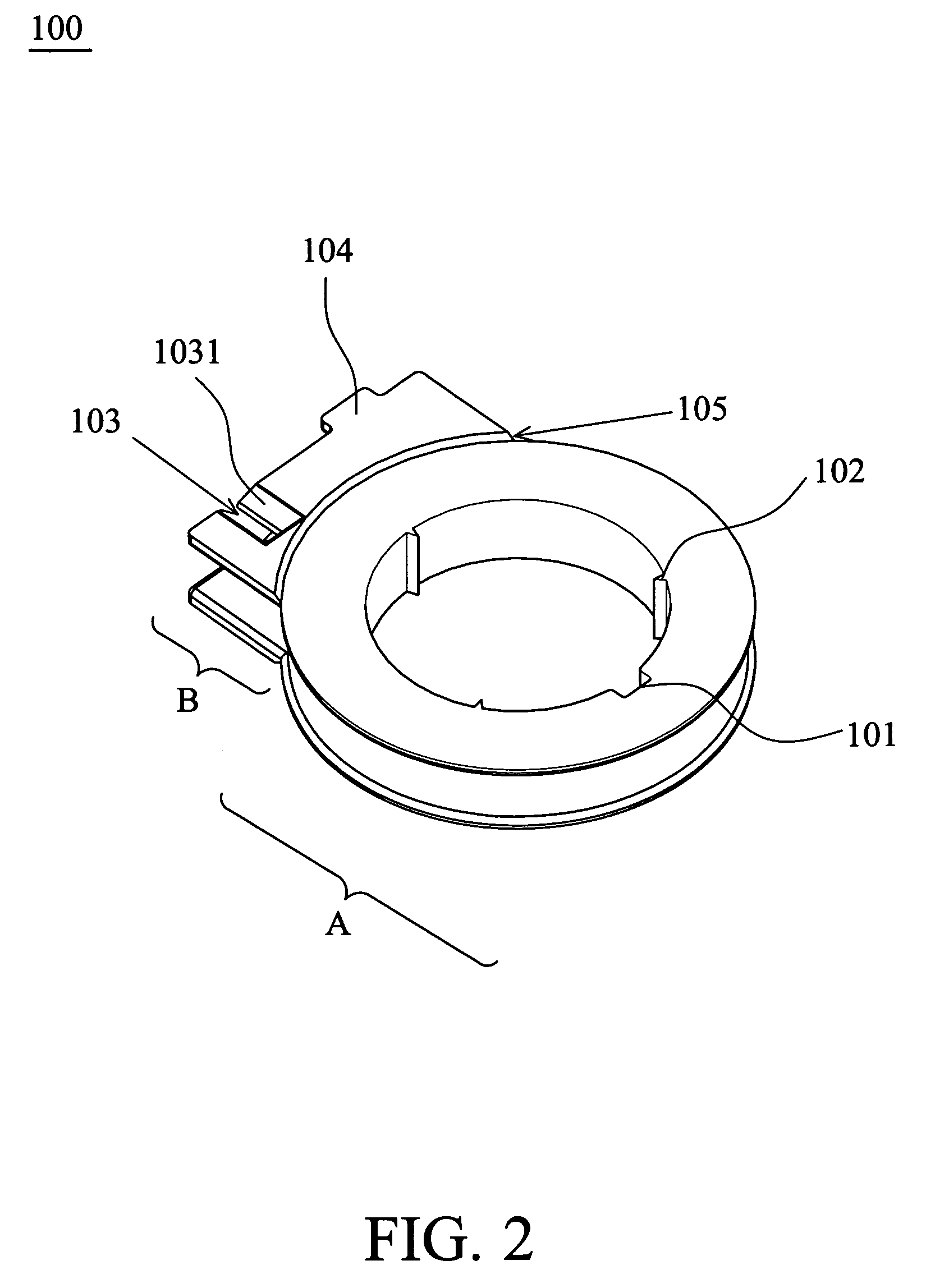Transformers and winding units thereof
a transformer and winding unit technology, applied in the direction of transformer/inductance details, coils, inductances, etc., can solve the problems of shortening affecting the peripheral electronic device, and affecting the yield of the transformer, so as to facilitate guidance, facilitate mounting, and potentially increase the life of the transformer
- Summary
- Abstract
- Description
- Claims
- Application Information
AI Technical Summary
Benefits of technology
Problems solved by technology
Method used
Image
Examples
first embodiment
[0027]FIG. 2 shows a first winding unit 100 having a winding portion A and a non-winding portion B. A conductive wire, such as a triple-insulated wire (not shown), is wound around the winding portion A substantially on the same plane in order to facilitate height reduction of transformer 200 shown in FIG. 3A.
[0028]In FIG. 2, the winding portion A and the non-winding portion B respectively have end surfaces situated on different horizontal planes. The winding portion A comprises a first joining portion 101 and at least a rib 102. When assembling the first winding unit 100 to a bobbin, such as the bobbin 202 shown in FIG. 3C and will be described thereafter, the bobbin is engaged through the first joining portion 101, wherein the rib 102 and the bobbin are press-fitted to eliminate excessive strain and to prevent sliding therebetween.
[0029]The non-winding portion B comprises at least a recess 103 and a protrusion 104. The recess 103 has a slope 1031 to receive the conductive wire. The...
second embodiment
[0034]FIG. 6B is an exploded diagram of a transformer 500. The transformer 500 primarily comprises a ferromagnetic core unit 201 formed by two cores, a bobbin 402, at least a first winding unit 100, at least a second winding unit 300, and at least a plate 203A. Elements corresponding to the ferromagnetic core unit 201 and the first winding unit 100 of FIGS. 3B and 6B share the same reference numerals, and explanation thereof is omitted for simplification of the description.
[0035]FIG. 4 is a schematic diagram of the second winding unit 300. The second winding unit 300 has a winding portion C and a non-winding portion D. A conductive wire, such as a triple-insulated wire or an enamel-insulated wire (not shown), is wound around the winding portion C substantially on the same plane to facilitate dimension reduction of the transformer. As shown in FIG. 4, the winding portion C comprises an abutting portion 301 and at least a recess 303. The recess 303 has a slope 3031 to receive the cond...
PUM
| Property | Measurement | Unit |
|---|---|---|
| height | aaaaa | aaaaa |
| voltage | aaaaa | aaaaa |
| input voltage | aaaaa | aaaaa |
Abstract
Description
Claims
Application Information
 Login to View More
Login to View More - R&D
- Intellectual Property
- Life Sciences
- Materials
- Tech Scout
- Unparalleled Data Quality
- Higher Quality Content
- 60% Fewer Hallucinations
Browse by: Latest US Patents, China's latest patents, Technical Efficacy Thesaurus, Application Domain, Technology Topic, Popular Technical Reports.
© 2025 PatSnap. All rights reserved.Legal|Privacy policy|Modern Slavery Act Transparency Statement|Sitemap|About US| Contact US: help@patsnap.com



